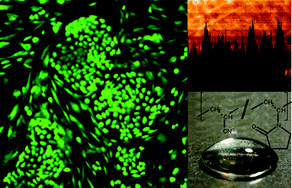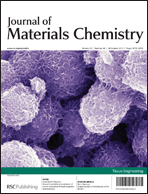The next generation of biomaterials for regenerative therapies requires the development of substances, which are able to influence and activate specific phenotype characteristics of cells and tissues. Research towards this aim has resulted in an increasing number of reports about material induced cellular functions and cell-cell interactions. In this context, polymeric materials, which are not intended to degrade can provide helpful in-vitro tools to gain more detailed knowledge about the cell-substrate crosstalk and the resulting cell specific effects. This review aims to consolidate current strategies to induce specific effects on adhesive cells which are related to defined characteristics of two-dimensional systems starting with the molecular dimension, following up with the nanostructure and ending with the surface microstructure. This includes approaches to induce direct or indirect biological responses towards cells by systematic changes in material properties such as hydrophilicity or elasticity. These properties are explained as a function of chemical composition such as the type and ratio of copolymers used for linear polymers, or the geometric arrangement of branching points for network polymer architectures. Surface topographical features are identified to strongly influence cell-substrate interactions and techniques are described to control the surface patterning of polymeric materials on the nano- or microscale. Finally we offer a strategy on how to develop complex and multifunctional materials, which might fulfill the requirements of cell and tissue adapted biomaterials for regenerative therapies.

You have access to this article
 Please wait while we load your content...
Something went wrong. Try again?
Please wait while we load your content...
Something went wrong. Try again?


 Please wait while we load your content...
Please wait while we load your content...